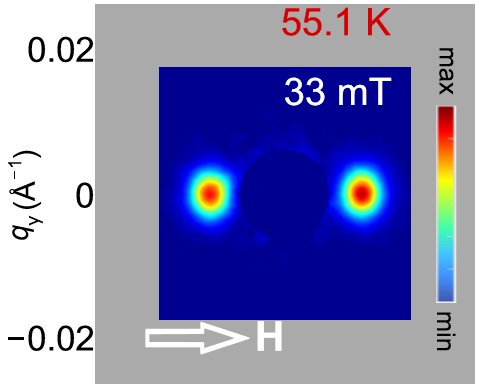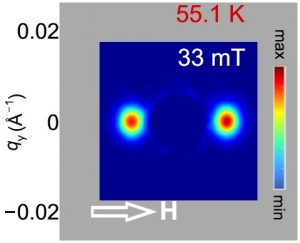A. S. Sukhanov, Praveen Vir, A. S. Cameron, H. C. Wu, N. Martin, S. Mühlbauer, A. Heinemann, H. D. Yang, C. Felser, and D. S. Inosov
The cubic chiral helimagnets with the P213 space group represent a group of compounds in which the stable skyrmion-lattice state is experimentally observed. The key parameter that controls the energy landscape of such systems and determines the emergence of a topologically nontrivial magnetic structure is the Dzyaloshinskii-Moriya interaction (DMI). Chemical substitution is recognized as a convenient instrument to tune the DMI in real materials and has been successfully utilized in studies of a number of chiral magnets, such as MnSi, FeGe, MnGe, and others. In our study, we applied small-angle neutron scattering to investigate how chemical substitution influences the skyrmionic properties of an insulating helimagnet Cu2OSeO3 when Cu ions are replaced by either Zn or Ni. Our results demonstrate that the DMI is enhanced in the Ni-substituted compounds (Cu,Ni)2OSeO3, but weakened in (Cu,Zn)2OSeO3. The observed changes in the DMI strength are reflected in the magnitude of the spin-spiral propagation vector and the temperature stability of the skyrmion phase.
https://doi.org/10.1103/PhysRevB.100.184408



